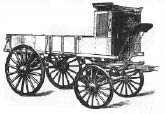
Discover rewarding casino experiences. 
|
Even towns had neighborhoods that identified amorphouse, changing limits such as the Third Ward or the Arcade (Freeport), Dementtown (Dixon), Bobtown (Mt. Carroll), Silver City (Sterling) or Eby’s Common or the North Siders (Lanark), the Patch (Amboy). Each had its own character but had a loose tie, a nebulous draw that down deep, sentimentally, drew memories or a homecoming years later. By their names some older neighborhoods seemed to have more prestige such as Lord’s Hill and the Kingdom in and near Dixon. Greg Langan, Lee County historian and writer, and all around nice guy, tells that his parents would often have stories about Lord’s Hill once Rt. 2, Lincoln Highway, between Dixon and Sterling but more familiar now as the Palmyra Road! Its steepness and long length were its primary characteristics and a test of both horsepower and automobile engines. They’d say that before an auto was purchased in the days of their infancy, they’d be taken out to Lord’s Hill to see how far up they’d climb before being stopped by the incline. If the driver could coax it to the top without stopping a sure sale occured. With three-four teams of horses pulling wagon or sled and chunks of wood to be put behind the wheels (especially if there was mud or snow) some unofficial title was won by team owners.
The Langan’s explaiined that it wasn’t just the name of the family who claimed the land at the top of the hill that named it alone, but that by the time a person had ascended the incline they certainly were nearer the Lord! John Lord and family had come by covered wagon from Massachusetts to Illinois in 1836 to claim land which increased to two or three farms. The four poster bed that was part of the furntirue that year was still being used by a great grandson in 1975, Nolan Lord who that year wrote a short essay with anecdotes of the pioneer life. He told of events during his grandfather’s tenure and his father’s, Fred Lord. Over time a stone quarry was developed, a blacksmith shop. John, Jr. had been the road commissioner and assembled the business of wagon and buggy making sleighs also. Several people were employed from the vicinity, building homes and contributing to the local economy. Heavy wagons cost $60 to $75.
The buggy shop was eventually moved to a separate plot and converted into a residence for the widow and a companion to her, after the death of John, Jr. who died in 1903. A few other buildings were taken up from the hilltop settlement except for the school that Nolan Lord attended, the Wild Cat School, which names a road branching off the Palmyra highway. There are some beautiful homes along here that are unequaled in design of their time. The road passes the drive-in theatre still in use at the east edge of Sterling and passes the Emerald Hills Golf facility. The “new” Rt. 2 that replaced the Palmyra road is now four lane leading near the Rock River, Sauk Valley College and a growing number of businesses into Sterling. Before the autombile, sleds and sleighs of all sizes were a thrilling ride down Lord’s Hill ... Sometimes going all the way to the Rock River.
Braking the heavy work-a-day sleds pulled, perhaps by three or four teams of horses, the milk cans daily made their way to the Condensed Milk Factory at the bottom of Lord’s Hill also. PDQ Me has told you about the milk plant’s rise to prominence. It provided income for many farmers and employees. But it was a hard pull back up the hill. Fred Lord had moved his family into the original residence at the death of his father to build up a dairy herd of fifty to sixty cows. He was the first in the neighborhood to have a milking machine. It caused a sensation among the folks in both country and town ... Crowds came out to witness the machine at work until so many came that the cows become anxious and the Lord’s had to tell visitors not to come. Every new apparatus helped build milk production so that wagons were lined up for a mile long the road waiting to be unloaded, the wagons being fifteen to twenty feet in length. It was a sight to behold. In about 1906 not only was the automobile groaning its way up Lord’s Hill but an electric “railroad” also. A new way of commuting. There weren’t mechanical-type machines yet to build such projects but efficient teams of mules, eight to ten pairs, pulled a drag and moved the dirt, some of them hired from local owners. Usually there were one or two passener cars and maybe a “freight” car so to carry goods between towns or drop off orders at homes along the way. The schedule allowed it to stop about every hour in front of the Lord’s residence so traffic (and visitors) were frequent, a dubious situation. At holiday times such as the 4th of July, the cars would be packed with celebrants going to Mineral Springs Park at Sterling or to fairs and other events. It was a time of togetherness in social life, everyday life, too. While the enjoyment might have been simple and uncomplicated it was sincere even at places like Lord’s Hill. Next Week — The Kingdom.
|







